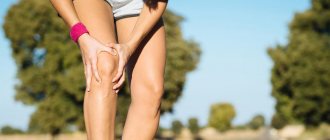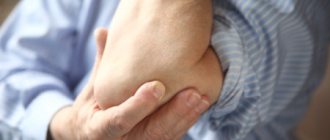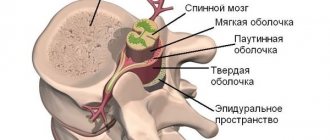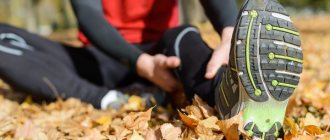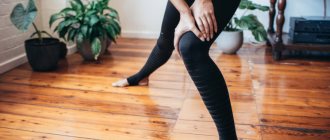Author of the article: Eduard Svitich - orthopedic traumatologist
Pull-ups are a good exercise for strengthening your arms, back, and torso. This exercise is included in all physical training programs and develops the back well. However, quite often after exercising on the horizontal bar, pain may appear in certain parts of the body. Most often, the shoulders hurt after doing pull-ups. The hands and forearms are often affected. A typical location of pain after pull-ups is the elbow joints.
Acute problem with elbow pain
Professional fighters, tennis players, lifters, acrobats and many others periodically complain of soreness in their elbows. In the gym, we often meet athletes whose elbows are bandaged with an elastic bandage.
Any monotonous and heavy movements over time lead to tears of muscles and ligaments, inflammation, and deformation of joints.
When we go to traumatologists, they cannot always solve the problem. Typically, anti-inflammatory tablets, warming and pain-relieving ointments, and physiotherapy (magnet, electrophoresis, and others) are prescribed. This treatment certainly relieves acute pain within a few days. But there remains a chronic one, which sometimes prevents people from training for a long time.
And what to do in such a situation: stop exercising for six months or dose the loads, avoiding pain? Or try alternative medical methods? The question remains open, but we will try to cover it from all sides.
Causes of pain
Conventionally, the reasons why elbows hurt can be divided into three groups: injuries, diseases and too much stress. Let's take a closer look.
Monotonous work
This is common for blacksmiths, truck drivers, crane operators, laborers and anyone else who puts stress on their elbows on the job. Sometimes not only the elbows hurt, but also the shoulder, wrist and head.
Is there a way to prevent pain from ever coming to you? You can provide enhanced nutrition for the joints, regular rehabilitation in sanatoriums and massage. Will this completely protect you from pain? With regular and repeated load - no.
Sport
A professional golfer hits the ball thousands of times during a practice day. Each time the elbow is loaded. Over time, the elbow ligaments begin to become inflamed. And every time the athlete moves, it hurts.
Boxers and wrestlers who use their elbows all the time may suffer from the same disease. Even such a harmless sport as table tennis can also damage your elbows.
Failed exercise or incorrect technique
At home or in the gym, you can perform any exercise so poorly that the elbow area hurts for a very long time. Often these are weighted pull-ups, dips on uneven bars in non-standard positions, French press, arm extension on a block and many others.
The fact is that you can tear a tendon, for example, the shoulder muscle. During pull-ups, the pain will be in the elbow area on the front side of the arm. It will feel like your biceps are hurting. But in that zone he has only 1 head. If anything, it has 2 heads on top.
However, the person will feel discomfort on the inside of the elbow. And when doing pull-ups, barbell curls or dumbbell curls. Almost all biceps exercises will cause problems. By the way, there may also be pain during lying dumbbell raises.
If you pulled a bicep, it's even worse. Because then you won't be able to do all these exercises even with the lightest weights. You cannot even lift a kettle full of water with straight arms.
If you have an injured triceps, you will mostly experience pain when you extend your arms. Sometimes when pulling up.
Damage to the elbow joint is a common cause of pain. In this case, its mobility is sharply limited, which is clearly noticeable. And the joint itself may swell.
Diseases and injuries
Elbow pain can be a symptom of various diseases. You should not wait until the disease goes away on its own. Consultation with a specialist is necessary in any case, and whether or not to follow the recommendations prescribed by the doctor is up to everyone to decide for themselves.
Thoracic and cervical osteochondrosis
The pain comes from the neck, shoulder blades, going into the arm. After that we feel it in the elbow. In this situation, a person’s nerves are pinched at the level of the thoracic and cervical spine. As a result, the head also suffers.
Most likely, you will need the intervention of a chiropractor or neurologist. Since the nerves are pinched, it is very difficult to control the hand. It's almost impossible to do pull-ups.
Arthritis
In the early stages, elbow pain appears during dips or pull-ups. Then in a state of rest, not allowing sleep. Arthritis can be a systemic disease (for example, affecting the shoulder, pelvis, knees), or it can attack 1 elbow in isolation.
Broken arm
With a bad fall, weak bones and heavy weights in the gym, you can break your arm. With a closed fracture, the arm hurts when you move it, and pain will also appear when you feel the fracture site. A crack in the bone will prevent you from doing pull-ups on the horizontal bar. We need a doctor, a cast and further treatment.
Dislocation
A sprain can damage the ligaments. The elbow area is painful, swollen and red. You can get a dislocation from an unfortunate fall from a horizontal bar or a car accident. Along with the elbow, the shoulder may also be dislocated.
Tendinitis
This unusual word means inflammation of the tendon. This is exactly what happens to professional athletes. Requires treatment and temporary rest.
Most often, the shoulder suffers from tendonitis (anatomical features).
Bone growths and salt deposits
Poor nutrition, excess salt consumption, and little fluid during the day can provoke the deposition of insoluble salts in the elbow joint. Naturally, his mobility will decrease. And before that it will be painful to bend and straighten your arm. There may be a crunching sound first.
Pull-ups will be just as painful. No amount of heating or elastic bandages will save you. The deposits must be removed.
The same goes for growths. A bone spur in the wrong place can make training very difficult. Especially pull-ups and parallel bars.
Recommendations for caring for joints
Most often, pain in the elbows occurs due to dysfunction of soft tissues or muscles. Tight pectoral and latissimus muscles often limit the movement of the shoulder joints. An athlete especially feels this when doing an overhead press. In this regard, therapeutic massage helps to get rid of tension.
A massage can be done by a chiropractor, osteopath or professional massage therapist. It is also recommended to do self-massage every day, in this case the upper back, latissimus, pectoral muscles, and biceps are massaged.
If you develop flexibility in your body, the stress on your elbows during exercise will be reduced. You need to regularly stretch your elbows and wrist flexors. If your muscles tense too much during exercise, there is a high risk of injury. Therefore, gradual stretching will improve the condition of the ligaments and muscles.
It is necessary to minimize the number of exercises that are aimed at developing only certain parts of the body. Isolated flexion and extension of the arms significantly increases the load on the joint. At the same time, bench presses, push-ups and pull-ups put less strain on the elbows due to the participation of a large number of different muscles.
All athletes are recommended to take an Omega-3 supplement, which is found in fish oil or flaxseed oil. A similar substance also reduces the inflammatory process, relieves swelling and reduces the formation of scar tissue. This substance is also found in walnuts. For preventive and therapeutic purposes, doctors recommend eating a vegetable salad with the addition of flaxseed oil or a trout dish every week.
To protect your joints from damage, you should use dumbbells instead of a barbell. Switching from barbell bench presses to dumbbell exercises will relieve chronic elbow pain.
If you have asymmetry in the shoulder joints, you should also use dumbbells.
Treatment Options
Despite the variety of conditions that our elbows can be in, modern medicine is quite effective in dealing with most of them.
Manual therapy
This therapy can be very helpful for spinal problems and pinched nerves.
When choosing a medical center that carries out similar activities, you need to find out as much as possible about it. Is there an appropriate license, how experienced are the specialists working there? It is advisable to communicate with those who have already received help at this chiropractic center.
The essence of manual therapy is this: the doctor uses his hands to feel the problematic areas, in his opinion, and adjust them to the desired position. Most often this affects the vertebrae. After several such sessions, a person experiences relief.
From a scientific point of view, everything is justified - nerves and muscles are pinched, and the sensitive hands of a chiropractor restore the original position of the bone and joint structures. And it really works.
Traditional medicine
In most cases, treatment begins with a visit to a traumatologist. Next, to rule out pinched nerves, you may be referred to a neurologist. The clinic does an X-ray, ultrasound or MRI of the elbow. Then the doctor makes a diagnosis and prescribes treatment. If the pain is high, painkillers are given. If the condition is quite tolerable, ordinary ointments and physiotherapy are enough.
It is worth noting that if you are injured, it is very important not to delay visiting a doctor. The process of your recovery largely depends on how quickly you receive help.
Difficulties with final recovery
Sometimes, despite all treatment methods, the recovery of a sore elbow is delayed for a long time. If a person leads a sports lifestyle, climbs rocks, does pull-ups on the horizontal bar, it will be difficult for him to change his lifestyle for a long time. Otherwise he will become depressed. People live for this.
Therefore, they wait a couple of weeks or 1 month and, even if the elbow still hurts a little, they run to the horizontal bar again. It seems that they are doing everything carefully and correctly, but the sharp pain still returns. This means that the old trauma has become fresh again. We have to wait again. And so time after time.
It happens that the pain is not sharp, but it is still there. This can turn an injury into a chronic one, which is very difficult to completely cure. In order for the injury to go away completely, you cannot stop right off the bat.
Tactics for resuming loads
If you have had problems with your muscles, you need to carefully prepare them for stress. Everything is easier with joints. If they are recovered, it is important to focus on the muscles and slowly return them to your regular training schedule.
In severe cases, when there were serious illnesses, you should change your training profile. Perhaps these are lifelong contraindications.
Let's consider the case when pain occurs from inflammation of the tendons or their stretching (on the shoulder flexors).
Several weeks should pass after treatment. That is, you still have to experience a state of rest.
Then we start trying:
- We warm up the elbow joints by rotating them. Knead well. If necessary, you can apply warming ointment (follow the dosage norms, otherwise it will be very hot).
- We take a weight of 1 kg and do arm curls with it. First we do it slowly, listening to the body. Then we accelerate (not too fast, otherwise the old injury will remind itself). Your task is to prevent the moment when it hurts.
- On this day it is better not to do anything else.
- The next day, take 2 kg, work with it 5-7 times. Try the hammer variation, where your hands are turned out as if you were holding a hammer. Increase weight carefully. It is not recommended to greatly increase weight in one day. The fact is that in a heated state, you can miss that important moment when you no longer need to exert stress. And after 12 hours you will feel the old sad pain.
This is how you reach normal weights. At first, you can exercise every day. Try it. And when the weight reaches 10 kg or more, you need to take a break.
Pull-ups should be tried on rubber or with support on the ground (floor). This is necessary to understand the capabilities of your muscles and tendons.
First aid for a torn ligament
If after training you find that there is sharp pain in your elbow, swelling, a bruise, it is impossible to move your arm and elbow, and deformation of the elbow joint is visually visible, then most likely you have a ligament rupture. The first step is to apply cold to the sore spot, for example, ice wrapped in a napkin, and immobilize the arm by fixing it with a splint.
You can do a light massage around the elbow, but only where there is no pain. This will speed up blood flow and reduce pain. You should absolutely not take a hot shower or heat the rupture site. After a couple of days, when the pain subsides and the swelling subsides, you can apply warm compresses and begin working out your arm with smooth movements.
If it was not possible to cope with the problem at home, and the pain and swelling, on the contrary, only increase, you need to consult a doctor.
Further training
Remember the main and very important recommendations that will help you keep your elbows in order.
- Do French presses and close-grip presses less often.
- If you experience discomfort in your elbow during any exercise, wrap it with an elastic bandage. This will help prevent future injury. Don't worry, the bandage won't put less strain on your muscles. And the load on your elbows will decrease.
- Do all flexion-extension of arms, pull-ups smoothly and without jerking. For example, on the snatch when doing weighted pull-ups, you can damage the brachialis muscle. And it will take a very long time (take my word for it) to pass.
- Warm up before physical activity. Each person's body is individual. Therefore, never look at those who immediately begin exercises without warming up. This may not work for you.
- Eat enough chondroprotectors and fats that are good for ligaments, joints and tendons. This is an excellent prevention of injuries on sports fields and in the gym.
- If you are overweight and want to learn how to do pull-ups, lose weight first. Otherwise, there is a chance that your hands will not bear such a load.
- Do not fully straighten your elbows (do not lock them) during exercises that require their participation.
- If you have not practiced martial arts before and do not know how to hit technically, you should not hit the punching bag with your elbows. This way you can knock out your elbow. And this will bring you a lot of inconvenience.
The main rule to help maintain health is the following: always and in any situation, be present in what you are doing. Monitor your feelings and listen to your body. He himself will tell you when to stop and take a break, and when you can calmly continue working.
Help from doctors
There may be a dislocated joint or sprained ligament. X-ray will help to understand the cause of the inflammatory process, whether there are pathological changes in the joints or bones.
In any case, you cannot continue training. If your elbows do not bend after training, give your arms complete rest and immediately consult a doctor. If pain occurs only in the left elbow, this may indicate the presence of heart disease. In this case, the doctor will prescribe an ECG.
If a general blood test shows the presence of a coccal infection, the specialist will prescribe appropriate treatment. If a nerve is pinched, the athlete will be referred to a neurologist for consultation.
If the x-ray shows that there is a crack or fracture in the elbow, the surgeon will apply a plaster cast. Then special exercises will be required to develop the joint and restore its mobility.
Now you know the possible reasons for the elbow not bending after exercise and you will be able to provide first aid to yourself and your comrades in a timely manner. Be healthy!
